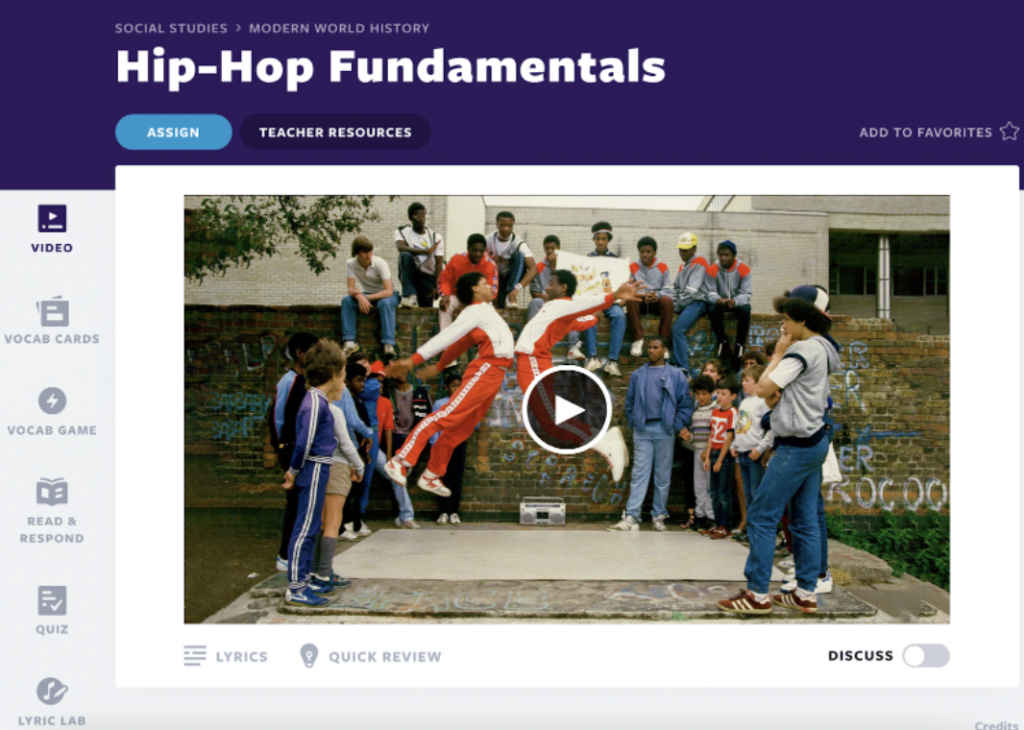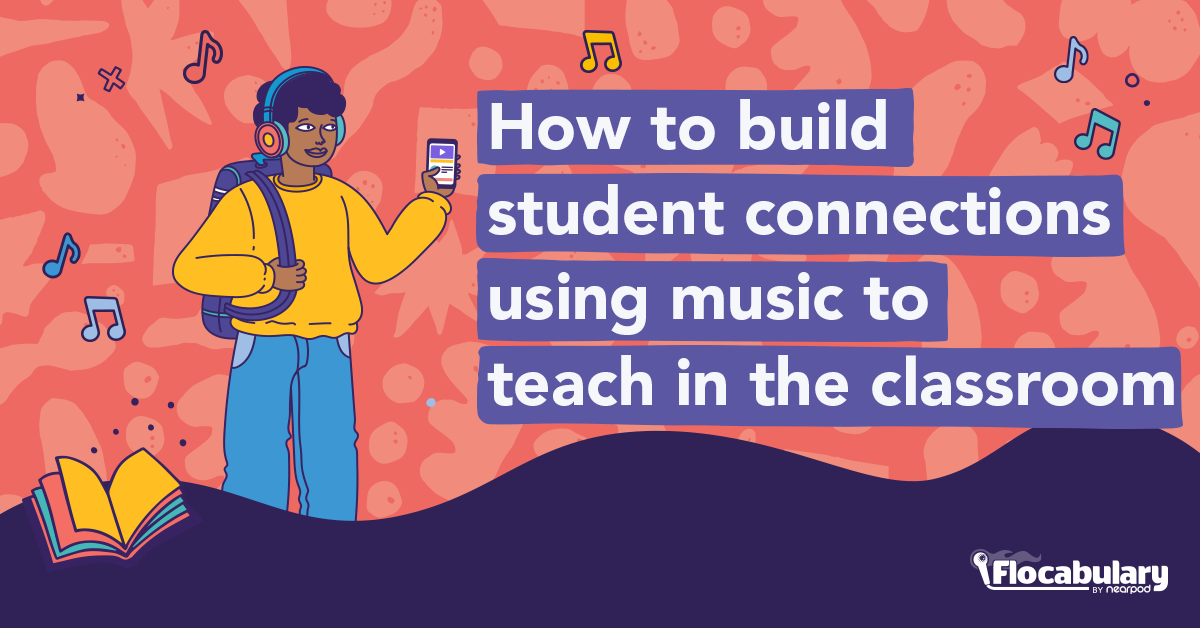
How to build student connections using music to teach in the classroom
Hip-hop, a cultural movement started by Black and Latinx youth in New York in the early ’70s, is a great launching point for using music to teach. When used as a part of instruction, hip-hop can help to engage students, bring curriculum to life, and reinforce core knowledge and skills, including vocabulary support and reading comprehension.
How can music be used in education?
Hip-hop pedagogy, essentially applying hip-hop elements to teaching methods, gives students a chance to share their knowledge with other classmates and analyze experiences of their own as well as others’ in a meaningful way. It can act as a means to simply get creative with words, or when diving a bit deeper, support the development of 21st-century skills like social and emotional learning, creativity, and collaboration.
For teachers and administrators curious about using music to teach, the elements of hip-hop naturally lend themselves to supporting instruction and building student connections. Below we’ve compiled excerpts from our in-house spoken-word artist and Flocabulary Product Specialist, TeAna Conaway-Manson from our recent webinar 3 Ways to Build Student Connections Through Hip-Hop Pedagogy. During the webinar, TeAna and her colleagues discussed how using hip-hop in the classroom can support critical thinking, creativity, and communication. Keep reading to learn more about hip-hop pedagogy and how to get started using Hip-Hop in the classroom to support building connections between you, your students’ interests, and the coursework.
Using music to teach and build critical thinking skills
Critical thinking is an essential skill for students to develop, and using music to teach provides many opportunities to do so. Starting with material that is relevant and engaging to students takes away some of the pressure that students might face when approaching unfamiliar texts or subjects.
“A lot of the time, I think we, as educators, might overlook how insightful students can really be when it comes to something that they can really relate to and that they’re passionate about.” TeAna explained. “And I always tell teachers, you start with what they’re passionate about, trick them into learning “the thing”, and then they can apply it across the board. And next thing you know, they can do it to Shakespeare…”
As an example of using hip-hop in the classroom for building critical thinking skills and student connections, TeAna discussed lyric analysis. With Flocabulary, teachers can select a lesson video about their preferred topic and analyze the lyrics with students. Each Flocabulary lesson comes with a printable handout that includes the lyrics from the songs. Teachers can have students highlight and annotate the lyrics to discuss what they think the artist is communicating. They can also have a classroom discussion with students about a specific lyric and analyze it as a group. To build an even deeper connection with students, educators can utilize a trending song to build this connection.
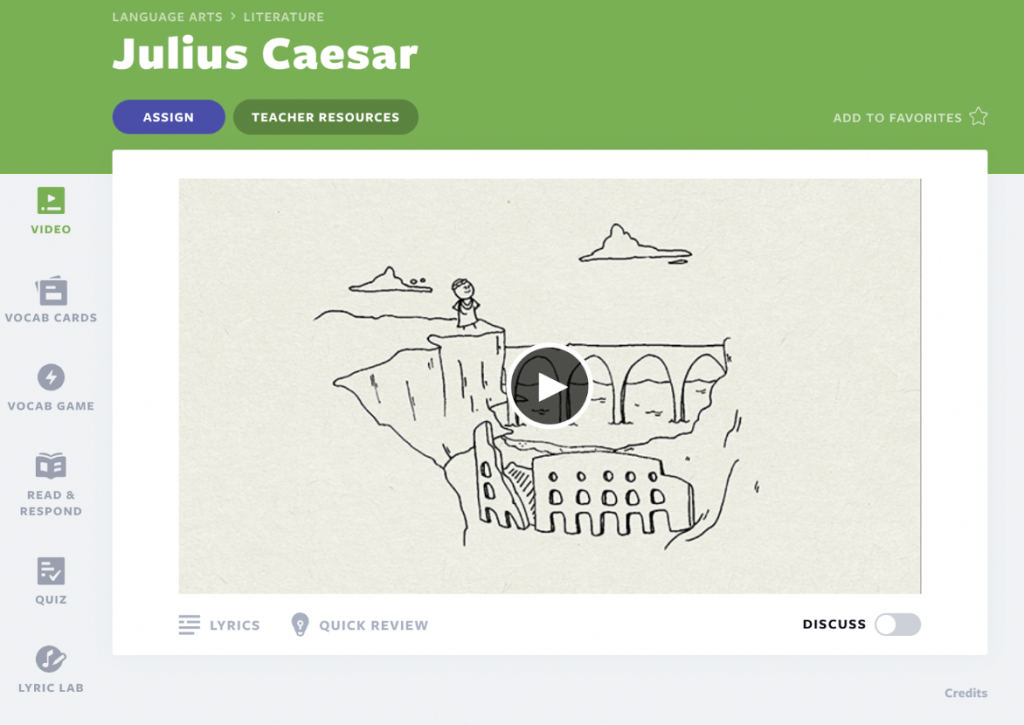
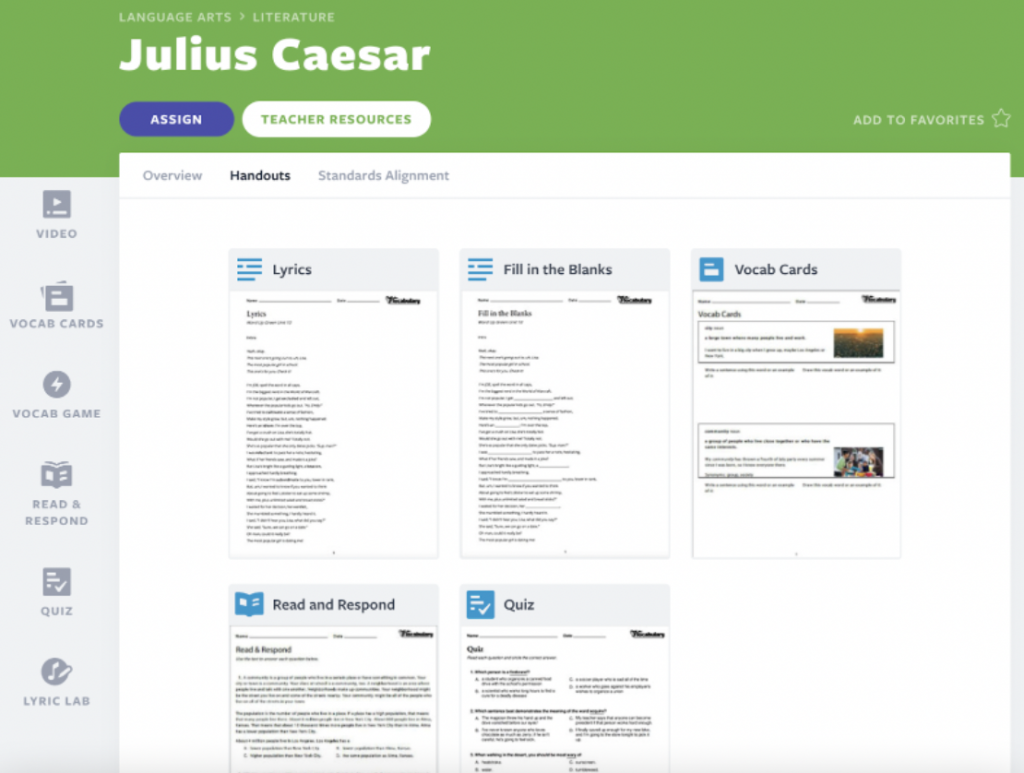
“I know that as educators, we always want to try to have students accessing several tiers of Bloom’s taxonomy, and hip hop in the classroom can do just that. So during Poetry Month, for example, I would always open up with lyrical analysis with my students in April. I would put a hip-hop lyric up on the board of a recent song that they know, and I would ask, ‘What does the artist mean by this?’ And that was our gateway into so many dialogues that we had” explained TeAna.
And when it comes to “school appropriate” lyrics, TeAna encouraged teachers to be strategic as well as set parameters at the beginning of a lesson on what is acceptable and what should stay out of the classroom.
“…I know some of my teacher friends were like, you know, it’s hard to pick out appropriate lines…but you don’t have to do wholesale! We don’t have to play the whole song for you to get the message and get the meaning behind the lyric.”
Using hip-hop in the classroom for test prep
This critical thinking application of using music to teach also supported students when it came to test prep season.
“They [students] had to do poetry analysis. They were already used to looking at metaphors and similes and wordplay. And the author said this, but they really meant this. Hip-hop is perfect for that. And I feel like sometimes people overlook it because they’re a little nervous about the content. But I wanted to use that example to show that it’s very possible to go in and select, piece by piece, the content that you want to use, in order to get that point across.”
Looking for a quick way to build student critical thinking skills through using hip-hop in the classroom? Download these premade activities to use with your students today!
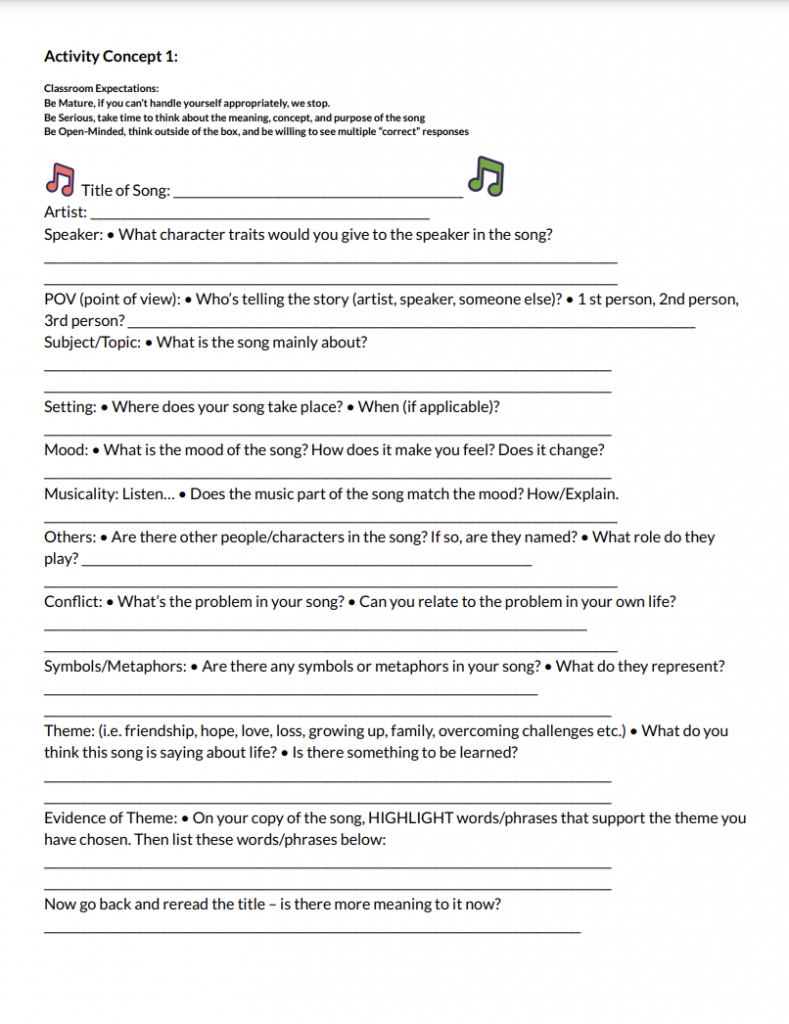
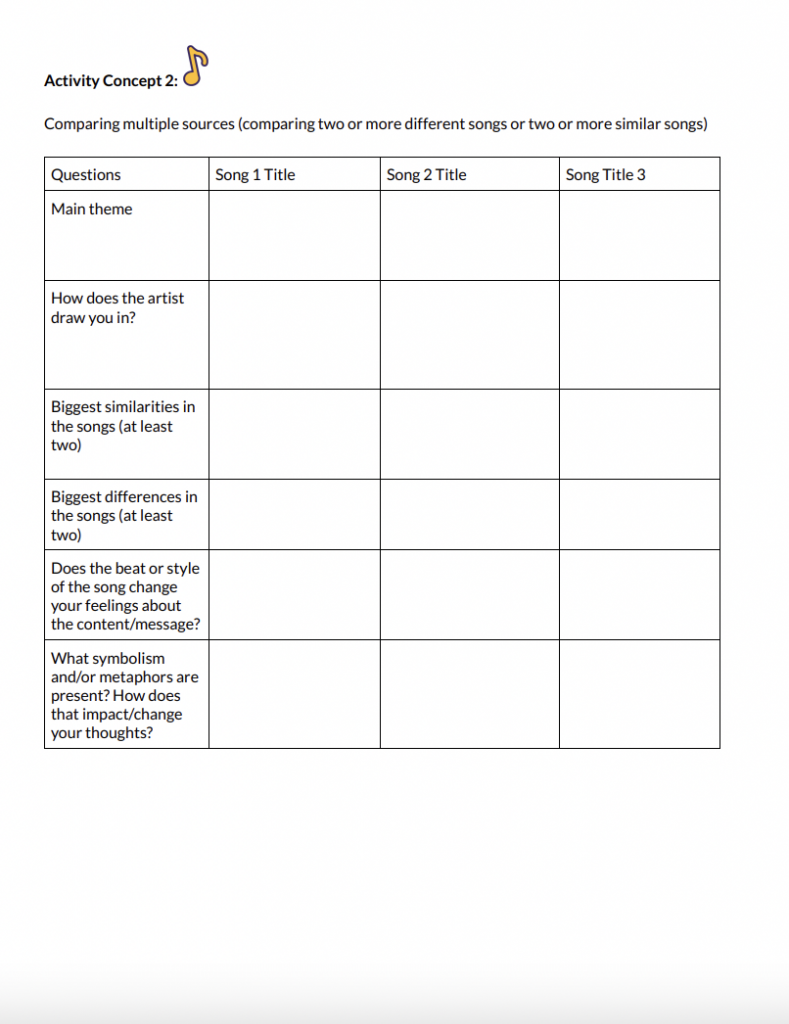
Using music to teach and build creativity skills
Giving students the space to create something from nothing is empowering, and using hip-hop creates structure that makes it easy to begin. Using music to teach, teachers can enable students to explore their own creativity and support their social and emotional learning needs, while also aligning their own ideas to relevant coursework and lessons.
Here are two simple strategies that build student connections and creativity using hip-hop in the classroom:
Strategy #1: Writing to Master Key Vocabulary
- Step 1: Choose a word and define it
- Step 2: Write the first line
- Step 3: Choose a rhyming word from a rhyming word bank
- Step 4: Finish the rhyme to connect the vocabulary meaning
- Step 5: Repeat the new words
Strategy #2: Writing to Share Knowledge
- Step 1: List important facts, dates, and key information
- Step 2: Write the first line
- Step 3: Choose a rhyming word from a rhyming word bank
- Step 4: Finish the rhyme and relate to the story
- Step 5: Repeat with new facts
“Out of the 30 kids that I had in my classroom, all of them did not want to get up and rap. And I think that’s an important thing to highlight….every student in your class is not going to be like, ‘yes, put me on the stage, I’m ready.’ But even giving them the space to create something that they can read as a poem…any expression of their thoughts, is really empowering.”
Using music to teach and build communication skills
Using hip-hop in the classroom can create a space for open communication, specifically as a way to explore and build student social and emotional learning skills. One line from a rap or song can open up dialogue that builds student connections with one another and also with their teachers. Giving students space to communicate, whether written or out loud, about what a particular lyric means to them and how they interpret it provides an opportunity to really get to know them. Using music to teach can be a medium to talk about social and emotional learning topics like stress, self-compassion, and working towards goals to name a few.
“When we talk about building connections, one of the very first things I learned in my teacher preparation program [was] kids don’t care what you know, as much as they know that you care.” TeAna said. “ When you build that rapport and they know that you care about them as individuals, and not just as students, and you care about their social and emotional well-being….you really do build a connection…in that moment.”
Using music to teach with an emphasis on hip-hop pedagogy enables teachers to connect with their students in a profound way that not only makes class more engaging but also culturally relevant. It really is all about bringing your authentic self (teachers included) and being open to different identities and experiences.
Worried about showing up authentically? TeAna gave this advice:
“When we recognize that hip-hop isn’t everybody’s preferred genre of music, you know, it might not be the thing that you listen to. …show up as your authentic self. We’re not asking you to rap. The advice that I would give to teachers who are uncomfortable with it, is that you do it your way. Go into your class and tell them, I have no idea what’s going on right here….put up the objective ‘This week is to help Ms. Smith write a rap’, and I guarantee you that the engagement will be through the roof. They will have all the steps. They will have all the critiques for you and everything. Because, what a fine time to lead a student who probably didn’t have a voice before to be an expert on something. And that’s the magic of it…you get to be the guide on the side!”
To learn more, watch the recording of the webinar, 3 Ways to Build Student Connections Through Hip-Hop Pedagogy.
Looking to get started with Hip-Hop in the classroom? Check out these resources!

